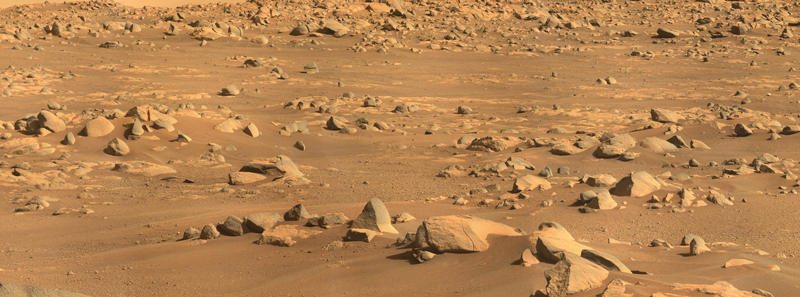The Perseverance rover touched down on Feb. 18, 2021 at 2:55 p.m. CST with live play-by-play straight from JPL Mission control. Within moments after touchdown, during celebration and high-fives, a picture emerged from the rover on the surface of Mars.
The rover and landing system later returned spectacular images of the landing and the first 360-degree panorama of the landing zone. Already hundreds of images have been sent home. Most of these first images are from camera systems and subsystem checkouts.
Katie Stack Morgan, geologist and deputy project scientist of the Mars 2020 rover mission, published on the geology of Jezero Crater in the December EXPLORER. Currently, she reports, “I’m living on Mars time!” as she, along with rover engineers, check out each system and calibrate each important science instrument on “Percy.” The rover scientists and engineers stretch their living clock about 40 minutes longer each Earth day to stay on track with daylight on Mars.
On Percy Sol 9, Martian geologist Kiersten Siebach reports on the rocks among which Percy landed.
“I think at this point, the real highlights are the pictures – there’s not much any of us can say about the geology besides noting that the rocks are light-toned and have holes, which could be vesicles or pits eroded by water or wind. We’ve got a couple months of mostly engineering checkouts ahead of us, and then the real science begins!” she said.
Siebach is an assistant professor in the Rice University Department of Earth, Environmental, and Planetary Sciences, and is one of 13 scientists selected to help operate the rover.
AAPG EXPLORE Live! held a panel on March 18 (Percy Sol 27) on “Perseverance and the Geology of Mars,” featuring Siebach and Michael Thorpe, Mars sample return scientist at the Johnson Space Center, AAPG President Rick Fritz and AAPG Astrogeology Committee co-chairs Bill Ambrose and Bruce Cutright.
As the rover gets down to the work of geologic exploration in Jezero Crater, it will look for signs of ancient life from over 3.5 billion years ago when a river delta and lake filled the impact crater for millions of years.
